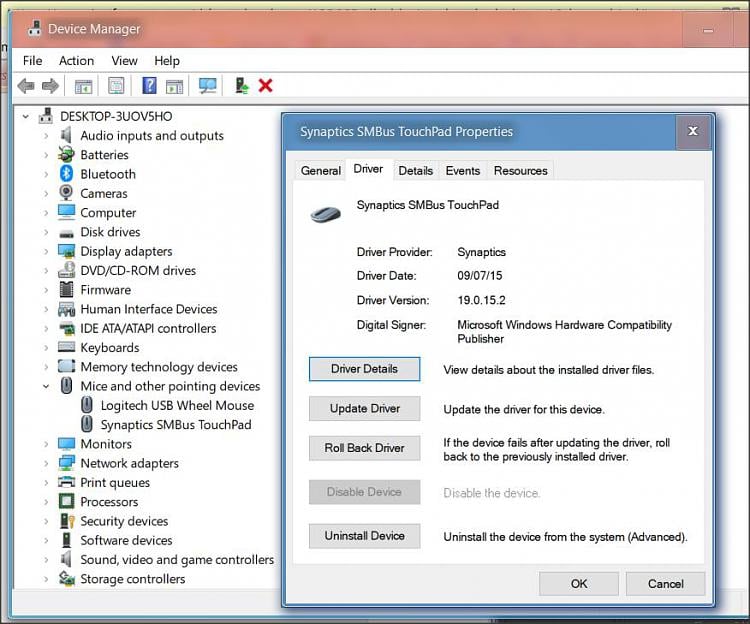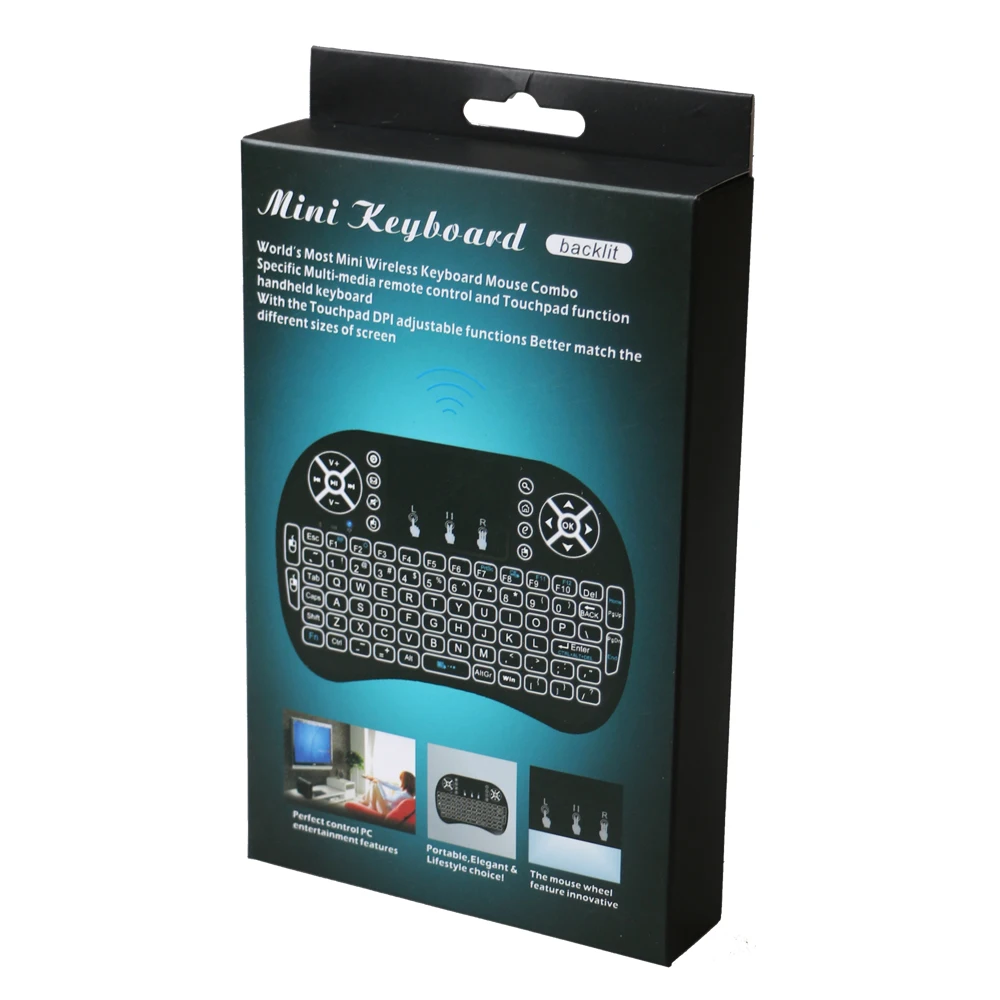If you mouse with your left hand or prefer something smaller, get the Microsoft Bluetooth Mobile Mouse 3600. The symmetrical shape works for lefties and righties, and our panel testers liked its. Thxs for the info, but can't this touchpad work with another touchpad driver? I don't know yet how drivers work and are coded, but I heard that there were just a few ones for a large ammount of existing hardware.
If your touchpad isn’t working, it may be a result of a missing or out-of-date driver.
On Start , search for Device Manager, and select it from the list of results. Under Mice and other pointing devices, select your touchpad, open it, select the Driver tab, and select Update Driver. If Windows doesn't find a new driver, look for one on the device manufacturer's website and follow their instructions.
If those steps didn't work, try uninstalling your touchpad driver: open Device Manager, right-click (or press and hold) the touchpad driver, and select Uninstall. Restart your device and Windows will attempt to reinstall the driver.
If that didn't work, try using the generic driver that comes with Windows. Here's how: in Device Manager, right-click (or press and hold) your touchpad driver > Update driver software... > Browse my computer for driver software > Let me pick from a list of device drivers on my computer, select HID compliant mouse, select Next, and follow the instructions to install it.
If changing your driver doesn’t help, there may be a problem with the touchpad itself. Contact your PC’s manufacturer for help.
You may check your mouse with the
3-Button-Mouse-HOWTO for serial mice
Kernel-HOWTO
12.17.3. Mice SpeciesTrackpad, Touchpad, are used with the majority of current laptops
Trackball, e.g. COMPAQ LTE
Pop-up-Mouse, e.g. HP OmniBook 800
Trackpoint, Mouse-Pin, e.g.

3 Button Mice, e.g.
Touchscreen, e.g. some Fujitsu-Siemens laptops, TabletPCs and PDAs
12.17.4. PS/2 Mice Most of the mice used in laptops are PS/2 mice (actually I don't know one with another mouse protocol). You may communicate with the PS/2 mouse through
Speaking of Emulate3Buttons, 100ms is usually better than the 50ms allowed in most default setups of
Or in
Usually a touchpad works with the PS/2 mouse device
The Synaptics TouchPad driver has the following functions (some functions require features from the touchpad that must be present, multifinger taps for example):
Movement with adjustable, non-linear acceleration and speed (Options: MinSpeed, MaxSpeed, AccelFactor)
Button events through short touching of the touchpad (Options: MaxTapTime, MaxTapMove)
Double-Button events through double short touching of the touchpad
Dragging through short touching and holding down the finger on the touchpad
Middle and right button events on the upper and lower corner of the touchpad (Option: Edges)
Scrolling (button four and five events) through moving the finger on the right side of the touchpad (Options: Edges, VertScrollDelta)
The up/down button sends button four/five events
Adjustable finger detection (Option: Finger)
Ext Mouse repeater support - Alpha! (Option: Repeater)
Multifinger taps: two finger for middle button and three finger for right button events
Online configuration through shared-memory (in development) (Option: SHMConfig)
The
Tipping with one, two or three fingers on the touchpad simultaneously results in pressing the left, middle and respectively the right mouse-button.
There is also another touchpad driver available. The Synaptics Touchpad Linux Driver -

Dell and Sony have started incorporating a touchpad, touchstick from ALPS. They are in at least the Dell Latitude CPx and the Sony VAIO laptop lines. Maintainer Bruce Kall writes: '
How to use
IBM ThinkPad Scroll Daemon
Not all touchpads are being from Synaptics, e.g some Gateways incorporate an EZ-Pad (Registered TM) and there might be other brands. The TPREV.EXE utility will verify you have a Synaptics touchpad.
The recent gpm package (version >=1.8, maybe earlier versions contain touchpad support, too) includes the above mentioned Synaptics touchpad device driver. This device driver has been developed by H. Davies <hdavies_AT_ameritech.net>. Instead of using the PS/2 compatibility mode of touchpad devices, you can now use native touchpad mode with some pretty impressive features.
In addition to translating finger motion into mouse motion and supporting the buttons, this support currently has several features (from the README):
a 'tap' on the TouchPad causes a left mouse click
a 'tap' followed quickly by a finger motion causes a left button drag type action.
a 'tap' in one of the corners causes an action the default configuration is upper right causes middle mouse click and lower right causes right mouse click
more pressure on the touch pad speeds the motion of the cursor
a 'tap' with a motion component (default > 2mm) initiates a toss and catch sequence. This is terminated by a finger touch on the pad (the toss also ends after 1 sec since that is the idle timeout period for the touchpad).
if the finger moves close to an edge then the mouse motion will be continued in that direction so that you don't need to pick up your finger and start moving again. This continued motion is pressure sensitive (more pressure is faster motion).
These features can be enabled/disabled and many of them have time and speed parameters which can be adjusted to the taste of the user.
It seems
Tapping with two fingers simultaneously to simulate a middle mouse button works on Logitech touchpads used in a few machines.
Thanks to Geert Van der Plas for most of the touchpad chapter.
12.17.6. Jog-Dial The
The README seems to be in Japanese, here is an English version.
ISHIKAWA Mutsumi wrote the jogdiald driver, which runs entirely in user-space (no kernel modules required).
rsjog. is a modification of the sjog utility.
12.17.7. TouchscreensThe only modern laptops I know which include a touchscreen are the Fujitsu Biblo 112/142 (aka MC 30) and the Palmax PD 1000/1100 (aka IPC 1000/1100).
The latest version of the Linux Compaq Concerto Pen Driver is available from Joe Pfeiffer's home page.
A current survey of drivers you may find at my page Touchscreen Laptops and Linux .
12.17.8. Pen Devices, MousepointsIBM and Toshiba laptops currently come with a pen devices instead of a mousepad or trackball.
It needs some time to get used to this kind of pointer device. It may help to rest your palm at the front rest. Also it's recommended to reduce the mouse speed.
12.17.9. External MouseFor better handling, e.g. with a 3 button mouse you may use an external mouse. This is usually a serial mouse or a PS/2 mouse, or in our days a USB mouse, appropriate to the port your laptop offers. Usually this is no problem. The only thing I currently don't know a solution for is the automagic detection of a newly plugged in mouse from X11. To get it work you have to restart your X server.
12.17.9.1. PS/2 MouseFor PS/2 ports there are so called Y-Cable available, which make it possible to use external mouse and external keyboard at the same time if your laptop supports this feature.
Don't plug in the external mouse while powered up. If you have separate mouse and keyboard ports, make sure you plug the mouse in the mouse port and the keyboard in the keyboard port. If you don't, you may have to do a hard reboot of the laptop to get it to recover.
12.17.9.2. Wheel MouseImwheel makes the wheel of your Intellimouse (and other wheel and stick mice) work in Linux/X11 to scroll windows up and down, or send keys to programs. It runs in the background as a daemon and requires little reconfiguration of the XWindows setup. 4 or more button mice and Alps Glidepad 'Taps' may also be used.

See also the WHEEL Mouse FAQ which describes how to get lots of X applications to recognise the scrolling action. For current instructions on XFree86 4.x see XFree86 4.x - Mouse Docs.
12.17.9.3. USB Mouse This part is taken from The Linux
There are two options for using a
It is important to remember that the HID driver handles those devices (or actually those interfaces on each device) that claim to comply with the Human Interface Device (HID) specification. However the HID specification doesn't say anything about what the HID driver should do with information received from a HID device, or where the information that is sent to a device comes from, since this is obviously dependent on what the device is supposed to be doing, and what the operating system is. Linux (at the operating system kernel level) supports four interfaces to a HID device - keyboard, mouse, joystick and a generic interface, known as the event interface.
12.17.9.3.1.2. HID Mouse Configuration In the kernel configuration stage, you need to turn on
Plug in a
Since
Use the following commands:
If you are unsure whether you are configuring the right mouse device, use
If you want to use the mouse under X, you have various options. Which one you select is dependent on what version of XFree86 you are using and whether you are using only
You need to edit the
If you are using XFree86 version 4.0 or later, add an InputDevice section that looks like the following:
Consult the current XFree86 documentation for a detailed explanation and more examples.
You also need to add an entry to each applicable ServerLayout Section. These are normally at the end of the configuration file. If you only have a
If you want to use both a
If you are using only a
If you are trying to use a
Restart the X server. If you don't have any mouse support at this point, remember that Ctrl-Alt-F1 will get you a virtual terminal that you can use to kill the X server and start debugging from the error messages.
If you want to use the mouse under gpm, run (or kill and restart if it is already running) gpm with the following options.
If you have both a
Table 12-1. Arguments for the
 msMicroSoft compatible serial mouseps2PS/2 or C&T 82C710bmLogitech bus mousebmATI XL bus mousembMicroSoft bus mousemscMouse Systems serial mouselogiolder mousemmanMouse Man protocol, serial Logitech mousesunSUN mouse, three buttonms3Intellimouse with wheel, at serial portimps2Intellimouse with wheel, at PS/2 portpnpPnP mice, alternative to msmmMM seriesbareoldest serial two button mouse12.17.9.4. Wrist Input Device - Twiddler
msMicroSoft compatible serial mouseps2PS/2 or C&T 82C710bmLogitech bus mousebmATI XL bus mousembMicroSoft bus mousemscMouse Systems serial mouselogiolder mousemmanMouse Man protocol, serial Logitech mousesunSUN mouse, three buttonms3Intellimouse with wheel, at serial portimps2Intellimouse with wheel, at PS/2 portpnpPnP mice, alternative to msmmMM seriesbareoldest serial two button mouse12.17.9.4. Wrist Input Device - Twiddler The
PowerBooks have a trackpad and only one button, although you can plug in external multi-button
If you are using the
If you are using XFree86, you pass

Touchpad Equivalent To Mouse Wheel

Comments are closed.